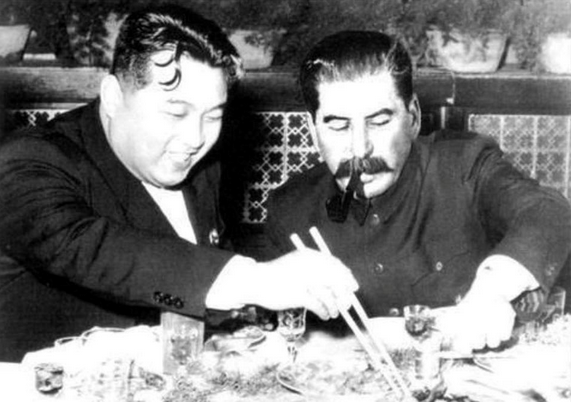With reports that Ukrainian military forces are running out of ammunition, that younger men are needing to be mobilised, and in the face of relentless Russian aggression, increasing attention is being turned to the commitment of the international community to support Kyiv. Whilst this mainly focuses on the United States and the major European powers such as Germany, France and the UK, those states closer to Ukraine tend to slide under the radar.

Whilst Poland has been steadfast and generous in its aid to its eastern neighbour, little is heard of the contributions of the four central European states of Austria, Czechia, Slovakia and Hungary. Despite their proximity to one another, their shared histories and common membership within the European Union (EU), these states have largely charted their own course, particularly on the Ukraine issue.
This should come as little surprise. Historic melting pots of cultures, invaded, incorporated and freed by diverse powers over centuries, there is an inherent nationalist pride in each country, with sovereign choice absolute. Whilst a common policy not only on Ukraine but immigration, EU integration and democratic stabilisation might make sense, these four states continue to steer alone.
All territories were once part of the sprawling, sclerotic, polyglot Holy Roman Empire. This bizarre historic construction saw elected emperors rule over vast swathes of central European territory with varying degrees of control. The power of the empire attracted the nefarious attention of numerous enemies, particularly the French in the west and the Ottoman Turks in the east. Indeed, had the Ottomans succeeded in taking the imperial city of Vienna during the sieges of 1529 or 1683, the map of Europe may have changed irrevocably.

Whilst Austria was central to the empire, nationalist movements in the Czech, Slovakian and Hungarian heartlands frequently turned the emperor’s head. Whilst at various times he was crowned king of Hungary or Bohemia, at others he was ousted for a local leader. These were, naturally, the lands that suffered most during the empire’s frequent wars, with Hungary and Slovakia long occupied and subjugated by the Ottomans. The Thirty Years’ War, in particular, wrought devastation and massive population loss. It originated in Prague, when three Catholic nobles who supported the claim of the Habsburg heir to the Holy Roman Empire becoming King of Bohemia, were defenestrated by local Protestant leaders. A bloody religious conflict, infused with territorial jockeying, ensued. Central Europe would not recover for a century.

From the mid-19th century, the Austro-Hungarian Empire shackled together the disparate central European territories, a new Holy Roman Empire minus the German lands. The relationship between the two crowns in Vienna and Budapest was never cordial and nationalist and ethnic discord soured attempts at assimilation. The Empire’s troubles would be a direct cause for World War One, when Archduke Franz Ferdinand was assassinated in Sarajevo by Serb separatists. The Empire imploded during the subsequent conflict.
Before the ashes of World War One were swept away and the newly independent central European states could gather momentum, Nazism shrouded the continent in darkness. Subsumed into Hitler’s evil empire, succour came from an eventual Allied victory. But whilst Austria was able to forge a future aligned with western Europe, Hungary and the unhappily married Czechoslovakia fell under the Soviet yoke. It would be another half-century before the USSR crumbled, its demise ushered in by the revolutions of 1989. The Czechs and Slovaks would only seal their divorce in 1993.

Given this history of enforced cohabitation and interference from outside powers, it is unsurprising that the central European states are wary of any infringement on their independent decision-making.
The Czechs have been consistently strong supporters of Kyiv, their government having recently established an initiative to buy hundreds of thousands of artillery shells for Ukrainian forces. The Slovakian government, however, has refused to join the initiative. Populist-nationalist leader Robert Fico has vowed that his country will not send “one more round of ammunition” to Ukraine. And yet a Slovakian crowdfunding campaign has exceeded its target of €1m to support the Czech initiative.
Viktor Orban’s Hungarian government, meanwhile, has remained Vladimir Putin’s biggest ally in the EU. Having degraded Hungarian democracy, preyed upon domestic fears of an immigrant wave from the east, and revelled in obstructing continental accord, Orban has disgraced himself in the face of Ukrainian desperation.

Austria’s situation is more complex. Trumpeting its ‘historic neutrality’, the government has paid lip service to supporting Ukraine and has contributed some money to EU support efforts. Yet simultaneously it has maintained strong economic ties to Russia. As one commentator noted, ‘Vienna doesn’t want to be seen openly supporting Moscow, but it’s also wary of doing permanent damage to a relationship that has been quite lucrative for the country for decades’.
Central Europe serves as an example of the wider issue of maintaining a sufficient level of support for the Ukrainian war effort against Russia. National interests trump a cohesive response and for these four states, their pasts reveal why.
Additional source
Rady, M. (2020). The Habsburgs: The Rise and Fall of a World Power




